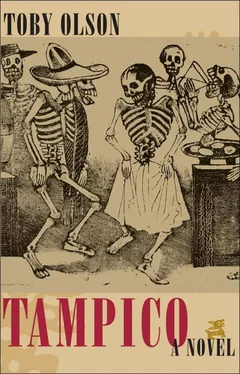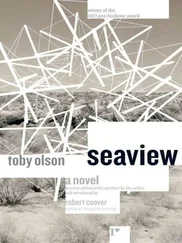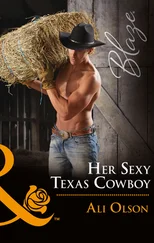We looked into other rooms, each with its own private design, homey and particular, and across from the closed door at the end of the hall, we entered a large shower room, sauna and hot tub to either side, and beyond that an exercise room, a large one, full of mats and machines, weights and stationary bikes and treadmills, and when we left there, Frank and Erica smiled and said good-bye, see you soon, and then went out the glass door leading to a small patio at the wing’s end, and Carlos and I stood before the closed door and he explained that the pager on Carolyn’s hip was a monitor.
“That way, she can get out and around on her shift and still be vigilant.”
The bed sat in the center of the room, a dust ruffle hiding the fact that it was a hospital bed, and the canopy that hung high over it was attached to the ceiling and allowed free access to both side of the bed. There was a row of machines against the wall, an oxygen unit, heart monitor, and a suction pump, each dressed in a cloth covering that rendered it more like a piece of furniture than a medicinal station, and the sounds of our feet were softened by modern Scandinavian carpets that covered the wooden floor. I could see the lighthouse on its new cement pad through the windows as we crossed to the bed. It was September already, but still there were tourists visible through the glass cupola, others waiting in line near the base.
“I want you to look up into the canopy,” Carlos said, as we approached the bed’s side. “It was Larry’s idea, and it’s something special.”
And it was that, and it was only after I had looked up for a long time and my neck grew stiff that I lowered my eyes to see the figure in his repose, head on the pillow in a position where he might look up too, though more comfortably than I had. I put my fingers on the bed, touching a coverlet made of the finest woven cotton, soft as a diaper, and could feel the embossment of leaf and flower figures in the stitching, and I could feel the faint beat of the man’s pulse at the bones of his wrist through them. I leaned in over his chest, expecting the medicinal, but there was nothing, no issue of breath, though my head was near his chin when I turned and looked up.
The hanging canopy was like a large open umbrella or the dome of the sky, and it was lined in a dark blue fabric the color of night’s sky, figures of stars sewn in at the circular border and in what seemed strategic places in the blue field that was otherwise empty in the spaces between the photographs, and I saw immediately, in a faded ferrotype, that the man had been born in Idaho before the turn of the century: a newborn in a quilted crib, head framed in a white bonnet, and the stiff figures of a mother in bell-shaped dress, his father wearing a stovepipe. They were standing before a sign announcing a granary and its location, and the date of birth had been penned in the vacancy at the building’s side.
There were dozens of photographs, and most were in black and white, though a few color snapshots, more informal, punctuated the field like fading planets, and I knew as my eyes roamed through the field that I was seeing the history of the man’s life there, in a patchwork, much like real life, the narrative in the empty spaces between memory-evoking images and in the matrix that they created. There were farm pictures, a boy standing in a fenced enclosure among pigs, then high on the seat of a horse-drawn reaper, and war pictures, young men sitting on blasted stumps beside a trench, eating K-rations from metal bowls that looked like emesis basins, photographs taken at country lawn parties and at funerals and those that commemorated marriages and other, obscure occasions. There were pictures, too, of lovers, in chaste poses near lakes and in gardens, one child only, a thin sickly girl in a loose dress, born to them, and the grandchildren of others possibly, a sister or a brother, in the few colored ones. His wife seemed to be fading already, at his side in their wedding picture, heading toward her invisibility, and surely his daughter was too, and since he was well over ninety now, all must be dead but for him. And still the pictures raised up the past again, though not in regret or accusation, but simply to establish that it had taken place and that its story was not in the pictures themselves but in rearrangement, something he might take on in fancy or the listless moments near the end of his own passage, should he awaken and look up again.
There was a photograph of a boy on a pony wearing a cowboy hat. It was tied on with a string under his chin, and he wore a leather vest, ill fitting, that had obviously been provided for the occasion. He looked pleased in the saddle, tentative as well, and though he held up the reins and his other hand rested familiarly upon the horn, his pose was a little wooden, though he seemed anxious to please both himself and the photographer he was smiling out at. Maybe he was six years old. There was something odd about the picture, though just a stolid pony, a boy riding him as if he were a spirited horse, the split rails of a corral fence behind him. Then I found the odd thing, the dark trouser legs of the man holding the pony steady, seen through the pony’s thinner legs, his heavy dark shoes behind the hooves.
He was meant to be out of sight, not part of the photograph at all, the invisible mechanic of the pose, guardian of the life situation in which the photograph was taken. The boy might imagine himself a cowboy in the future, and not a farmer, but the man was there to prevent him from stepping into that future too soon. But it never is too soon, I thought, and of course the boy didn’t make that move, or any other provoked by imagination, and I wondered about myself then, and about Carlos standing beside me as I turned my head, feeling a stiffness in my neck from long looking, and gazed down into the man’s face, my own face only inches away.
It was a skull face, skin like parchment over bone. His lips were flat and almost gone, his teeth like those of a horse, visible to the gums, and I could feel no breath against my cheeks. Only his nose still held his personality. It was a flat workman’s nose, broken many times, but it too was beginning to fade away, collapsing down into the caves of his bony nostrils. His eyes were closed, and I wondered if he’d ever seen that panorama of his life above.
“Through the lids, maybe?”
It was Carlos at my elbow, and when I looked closely at the man’s eyes I could see the lids were thin now as waxed paper, and I thought I could see the outline of his pupils there, small circles pressing up like some official seal embossed in a document.
It seemed impossible, but so did everything else just then, even that this veteran should have stayed alive through a killing cancer long enough to save the Manor for others old as him, so they could keep on living, even that he should linger on, if no more than a monument to that achievement. Maybe he had finally kicked the pony, stepped away from those dark trouser legs and become a cowboy, soon to be a skeleton riding a white horse.
I could see the photographer standing near the meadow’s edge, his camera pointing in the wrong direction, as we approached the company under the umbrella awning at the food tables. It was a large box camera, on a heavy tripod, an eight-by-ten I thought and very old, and there was even one of those dark hoods hanging down limply over the viewing apparatus. And the photographer’s hair hung down as well, black and thick to shoulder length, and he was wearing a kind of blocky suit of woven fabric, rectangles of color sewn together.
“That’s Alma,” Carlos said. “He seems to like the lighthouse. He’s here as a kind of escort, to accompany my grandfather when he goes back. It’s his hobby, taking pictures I mean.”
Читать дальше












